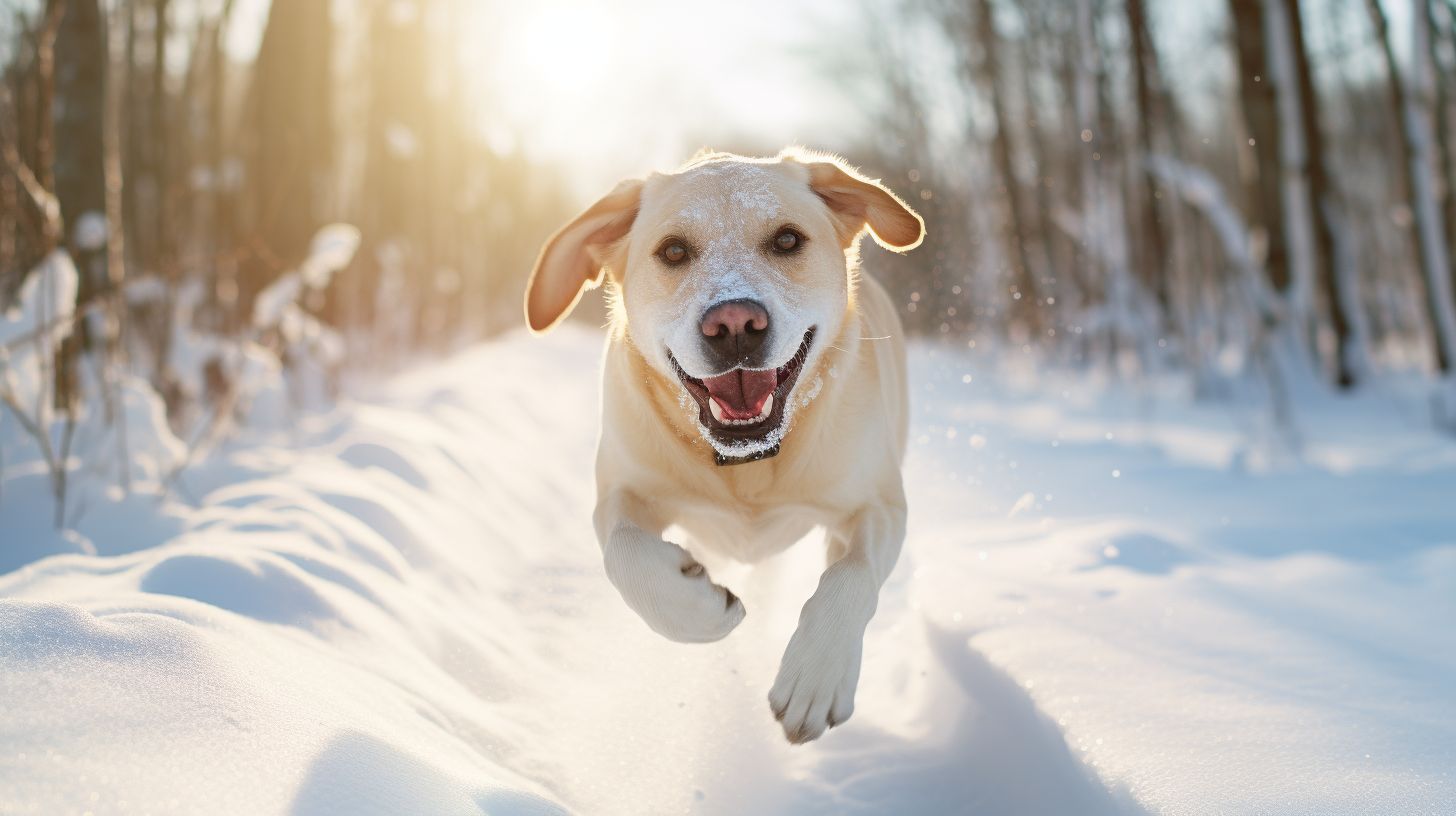Blog Why Do Dogs Love Cold Weather
As fellow dog lovers residing in the beautiful Palm Beach area, we’ve all witnessed that extra spring in our dogs’ steps on those pleasantly cool mornings. Maybe you’ve chuckled as your furry pal bound gleefully through a mound of fallen leaves, their joy almost tangible in the crisp autumn air.
Trust us, it’s not just a figment of your imagination—our four-legged companions genuinely bask in the relief of a drop in body temperature.
In diving into this topic further, we’ve gathered some intriguing tidbits to share with you about why our pets find so much happiness in chillier weather. So snuggle up with your favorite four-pawed buddy, and let’s explore together—you’ll be equipped with insights and tips to ensure every cold snap becomes an opportunity for joyous adventures!
Key Takeaways
- Most dogs have an innate joy for cool weather due to their evolutionary roots, and snow can activate their instincts for adventure and exploration.
- Certain dog breeds with thick coats, like the Siberian Husky or Alaskan Malamute, are especially well-suited for cold climates and thrive in snowy conditions.
- Cold temperatures often lead to more energy and a desire for increased exercise among dogs, which benefits their health and well-being.
- Dog owners must recognize the signs that indicate a dog is too cold, such as shivering or reluctance to move, to prevent risks of hypothermia or frostbite.
- Proper care during cold weather includes offering warm shelter, protective clothing if needed, paw balm application, clean and dry resting spaces, and monitoring outdoor time.
Why do Dogs Love Cool Weather?
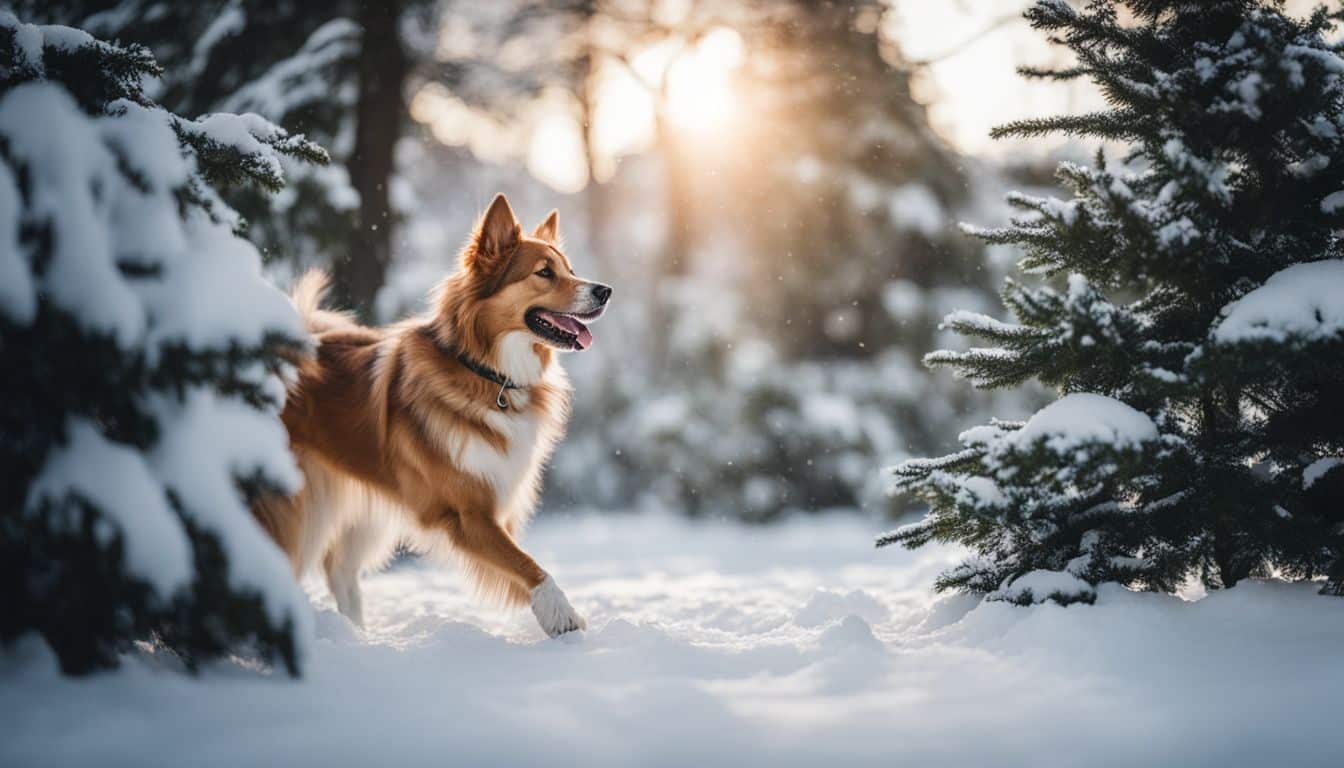
Dogs love cool weather for various reasons, including enjoying snow and cold, wanting more exercise, comfort in cold conditions, and even health. Understanding these factors can help you better care for your furry friend during colder seasons.
Enjoyment of Snow and Cold
We all know the joy that bursts from our canine friends when they see a fresh blanket of snow. Their excitement is contagious as they bound and leap through the chilly wonderland, noses deep in powdery drifts.
Breeds like Siberian huskies and great Pyrenees have lush coats perfectly suited for subzero romps, letting them play for hours outside in the cold in what feels like their natural element. Snow seems to awaken a primordial instinct in many dogs, reminiscent of their wolf ancestors who thrived in cold climates.
Their senses come alive with every snowfall; new scents are trapped on the ground, waiting to be discovered, while familiar landscapes transform into exciting territories to explore.
For these furry pals, each flake brings an adventure and an invitation to engage their bodies and minds fully. A game of fetch becomes even more thrilling when there’s snow involved—watch them dig frantically for that lost ball! This why dogs love snow and cooler conditions aren’t just fun—they also encourage extra physical exercise that keeps them healthy and happy during winter months.
Desire for More Exercise
Chilly weather stimulates dogs with an extra burst of energy, urging them to run and play more. They must stretch their legs and explore the wonders of a cool day. Our furry pals often become more active in lower temperatures, which is fantastic for their health and well-being.
Consider the joy on your dog’s face as they romp around in cooler conditions—it’s like watching kids at a playground! We understand this craving for movement, so our services here in Palm Beach cater to energetic canines.
Whether it’s engaging training sessions or spacious boarding facilities, we ensure your pooch gets plenty of exercise regardless of the temperature outside.
Comfort in Cold Conditions
Moving from their love for active romps in the cold, many dogs also find solace in cooler temperatures. The thick fur coats of breeds like Alaskan Malamutes and Siberian Huskies serve as snug blankets, keeping them comfortable when the wind chill or the thermometer dips.
These canine companions don’t just tolerate chilly weather; they revel in it! Their biological makeup means they’re often much cozier amidst snowflakes than under the sun’s relentless rays.
For our furry friends who were bred for snowy landscapes, Palm Beach may offer more sunshine than they are used to, but rest assured, at our dog hotel, we pay special attention to maintaining a cool environment.
We monitor each pooch closely for signs of discomfort due to temperature changes, ensuring every guest stays active and utterly content no matter what Mother Nature has in store.
Health Reasons
We understand how vital it is for our furry friends to thrive in cooler climates, particularly when health is at stake. Just like us, some dogs have a higher tolerance for cold due to their thick coats, making them more comfortable as the temperature drops.
However, we always watch for shivering or reluctance to move—these signs that it might be too chilly even for large dogs or the fluffiest breeds.
Ensuring your pooch stays warm isn’t just about comfort; it’s essential for their wellbeing. The American Veterinary Medicine Association warns that temperatures under 30 degrees can pose serious risks to vulnerable dogs.
Dogs left in such cold may face hypothermia or frostbite, which can quickly become life-threatening without proper care and attention. We prioritize keeping them safe and snug so you can rest easy knowing they’re well looked after in any weather.
Understanding Cold Weather Dog Breeds
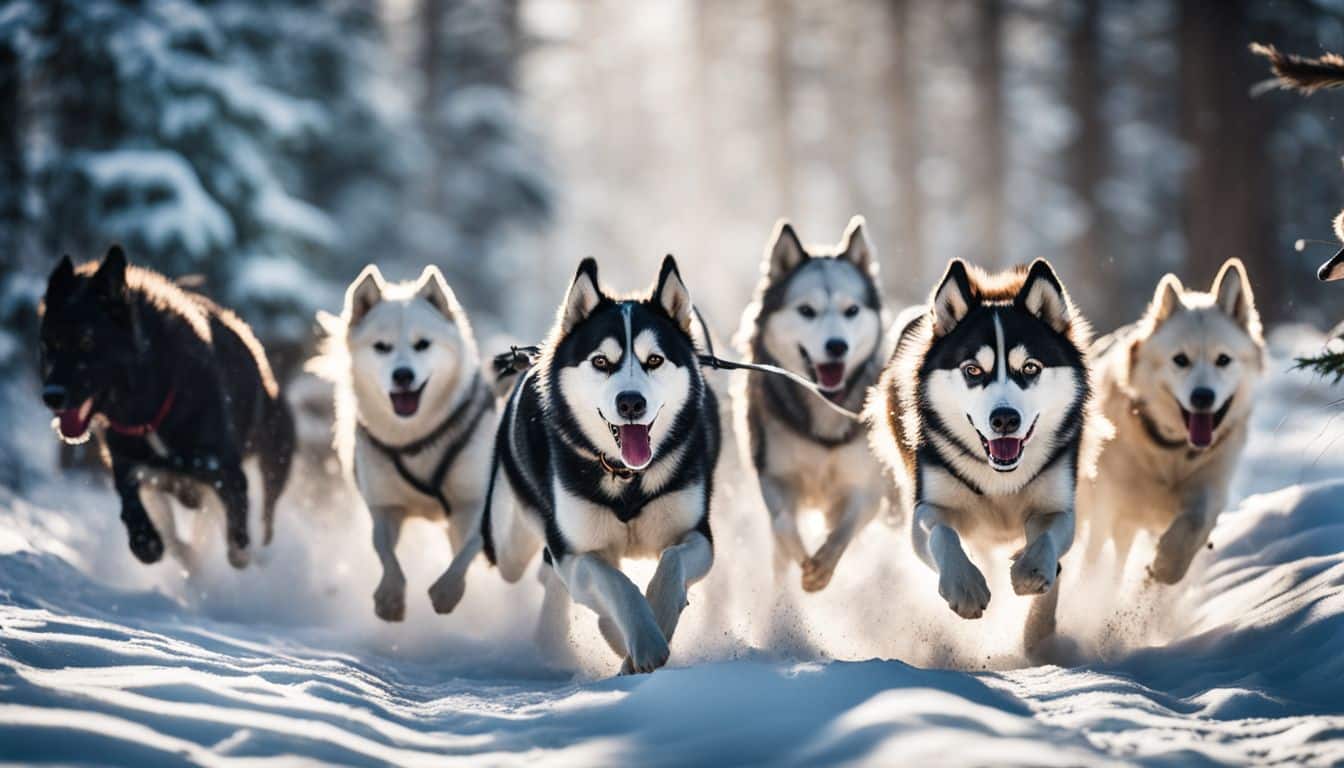
Let’s explore how different dog breeds are naturally suited for cold weather and how their unique characteristics make them thrive in cooler temperatures. Read on to learn more about the fascinating world of dogs and cold weather preferences.
Alaskan Malamute
The Alaskan Malamute is known for its thick, water-resistant double coat, making it well-equipped to withstand temperatures as low as -20 degrees Fahrenheit. Bred originally for hauling heavy freight sleds in the Arctic, these dogs are built for cold weather and thrive in such conditions.
Their strength and endurance make them ideal companions for outdoor activities like hiking and backpacking. Proper socialization and training from an early age are crucial to ensure they exhibit good behavior and adjust well to different environments.
Due to their high energy levels, Alaskan Malamutes require regular exercise and mental stimulation, so they benefit from engaging in activities suitable for their active nature. Additionally, their friendly and sociable disposition makes them excellent family pets; however, potential owners should be prepared to provide the necessary physical outlets for this breed’s energy level.
Bernese Mountain Dog
Transitioning from the snowy tundra to the picturesque Swiss Alps, let’s delve into the world of the Bernese Mountain Dog. Originating in Switzerland, this majestic dog breed boasts a tricolored coat and thick, double-layered fur that equips it for colder climates.
Known for their hardy nature, these dogs have historically been used for farm work and are among the most well-suited dogs to colder temperatures. The Bernese Mountain Dog is among the 25 breeds that thrive in cooler weather, showcasing its natural adaptability to cold conditions.
With their robust build and striking appearance, these dogs capture attention as loyal companions who can easily weather chilly and hot climates.
Saint Bernard
Continuing our discussion of dog breeds well-suited for cold weather, let’s turn our attention to the Saint Bernard. Originating from the Swiss Alps, these gentle giants were bred for search and rescue missions in harsh winter.
Known for their thick double coat and sturdy build, Saint Bernards have a high tolerance for cold weather and can endure extreme temperatures. With a history of performing alpine rescues and traversing rugged terrain, the breed’s impressive strength and endurance make them ideal companions for those in colder climates.
With their friendly temperament, large size, and protective fur, Saint Bernards offer loyalty and warmth during chilly weather – making them an excellent choice for anyone seeking a canine companion equipped to handle cooler environments.
Siberian Husky
Moving on from discussing the cold-weather prowess of Saint Bernards, we must highlight the Siberian Husky. These dogs are born for frigid conditions and thrive in snowy northern climates due to their thick double coat and sturdy build.
Bred as sled dogs by the Chukchi people of northeast Asia, they have an innate ability to withstand extreme cold when temperatures drop and are highly energetic in winter settings.
Their exceptional endurance and natural inclination for snow-covered landscapes make them ideal companions for outdoor activities, even in the coldest weather. The Siberian Husky’s adaptability to chilly environments and friendly disposition make them a great fit for families living in areas where cold weather prevails.
How Cold is Too Cold for Dogs?
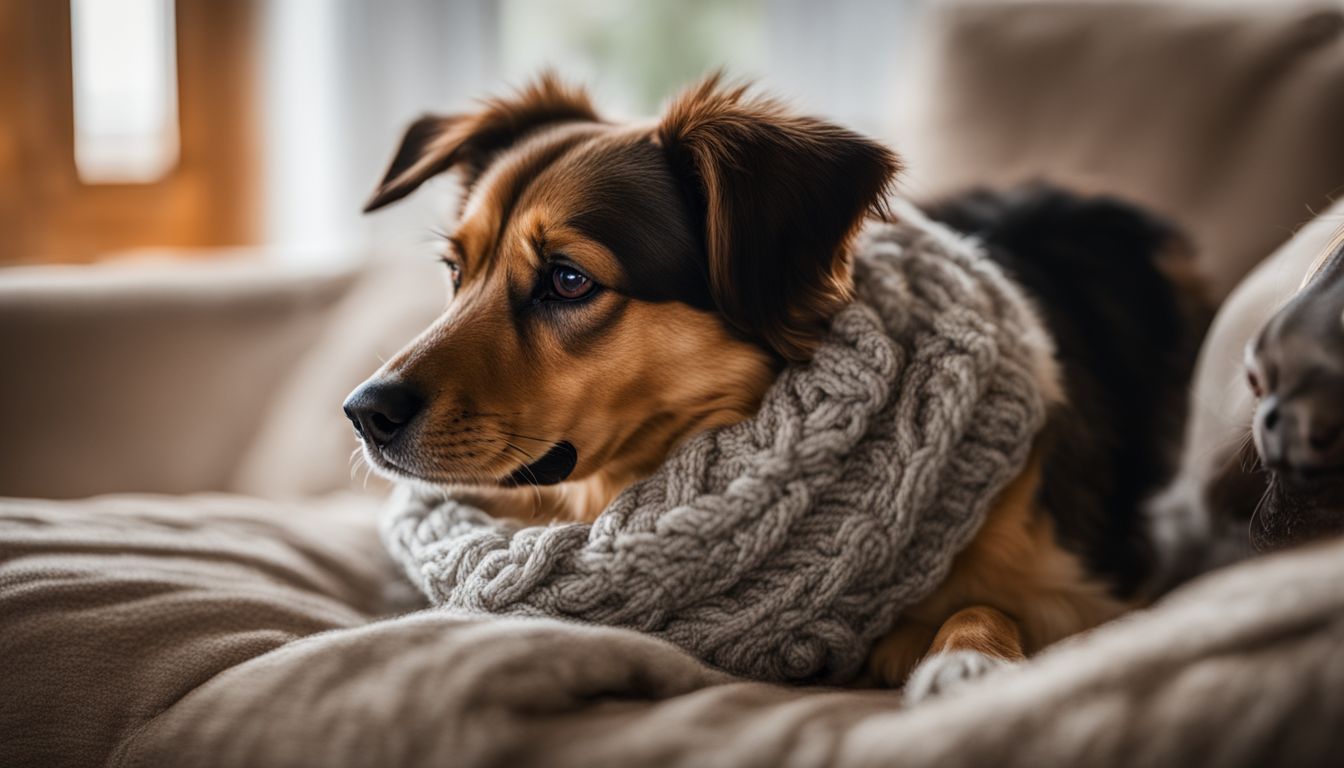
Some signs that your dog is too cold include shivering, acting anxious or weak, whining or barking excessively, and seeking shelter. Protect your dog in cold weather by providing them with a warm shelter and suitable clothing and limiting their time outdoors in extreme temperatures.
Signs Your Dog is Too Cold
When the temperature drops, it’s important to be aware of signs that your dog may be too cold. We don’t want anyone to have sick dogs!
Here are some indicators to watch for:
- Trembling or shivering
- Slowing down or refusing to walk
- Hunching over or tucking tail between legs
- Seeking warmth by cuddling near a heat source
- Pale or discolored gums
- Whining, barking, or showing signs of distress
How to Protect Your Dog in Colder Weather
To protect your dog in cold weather, consider these essential tips:
- Apply paw balm to prevent cracked and dry paw pads, protecting them from snow, ice, and salt.
- Regularly clean dirt and chemicals from your dog’s paws after walks to avoid irritation or ingesting harmful substances.
- Determine how cold is too cold for your dog based on their size, breed, age, and health condition to ensure their safety outdoors.
- Provide a warm, cozy sleeping area with blankets or heated beds to comfort your dog during colder nights.
- Use sweaters or jackets for short-haired or small dogs to keep them warm during outdoor activities or walks in cooler temperatures.
- Use boots to protect your dog’s paws from cold surfaces and potentially harmful substances on the ground.
- Monitor your dog’s activity levels closely, ensuring they stay warm through regular indoor playtime and exercise.
Conclusion
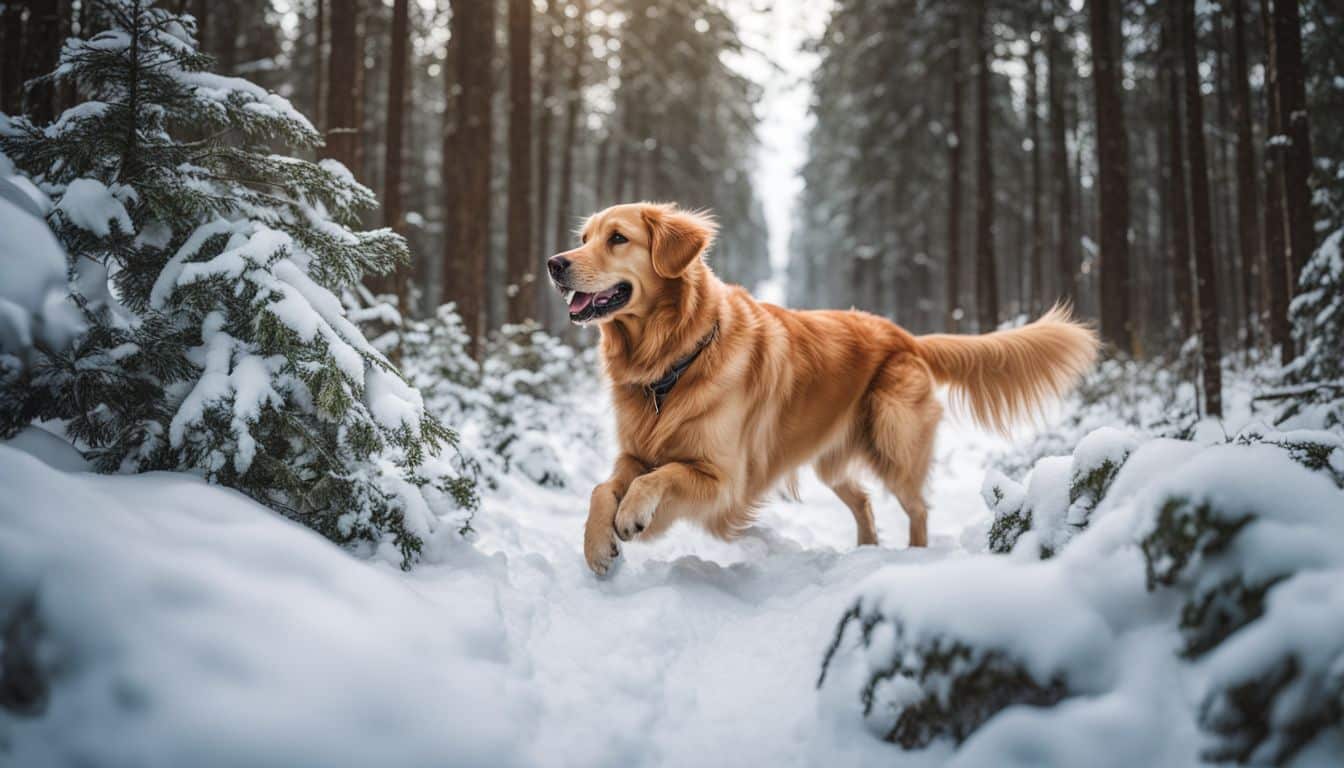
Dogs love cool weather for various reasons. They enjoy playing in the snow, exercising more, the great outdoors, and finding comfort in the cold. Certain dog breeds are specifically adapted to colder climates and have thick coats.
It’s crucial to understand signs that indicate when dogs are too cold. Ensuring their safety during winter months is essential. Regular monitoring of dog behavior can help pet owners take the necessary steps to keep their furry friends warm and healthy in chilly conditions.
FAQs
1. Why do some dogs like cool weather more than others?
Some dogs, especially breeds with thick fur, such as Akitas, Saint Bernard Dogs, and Siberian Huskies, enjoy cool weather because it’s more comfortable for animals with them compared to heat.
2. Can all dogs handle cold weather well?
No, not all dogs can handle cold weather well. Breeds like the Shiba Inu and American Eskimo Dog might love it, but smaller or short-haired breeds often need extra warmth.
3. Do dog behaviorists think cool weather affects how active my dog is?
Yes, dog behavior experts like Alexandra Horowitz observe that many dogs get more lively in cooler temperatures because they don’t overheat as quickly.
4. Should I worry about my dog catching a cold when it’s chilly outside?
Dogs can catch colds but not the same way humans do; however, keeping them warm and dry in cooler climates helps prevent illnesses such as kennel cough or distemper.
5. Are there any activities my Karakachan or German Shepherd might enjoy in colder seasons?
Breeds like the Karakachan and German Shepherds could enjoy activities like mushing with Kerstin Galisch or participating in no-kill animal shelters’ outdoor events during colder months.
6. How does cool weather influence a dog’s ability to smell things outdoors?
Cooler air allows smells to linger longer and travel further, enhancing your pup’s smelling power – an advantage for scent-oriented breeds like Bloodhounds or Elkhounds during tracking tasks.
Contact Very Important Paws today in Palm Beach for all your dog boarding, hotel, daycare, grooming, and training needs.


